The missions were established by the Franciscan order to christianise native Americans. They were the northern reaches of Catholic New Spain (Mexico) and in these sparsely populated regions each mission had only a couple of hundred inhabitants at any one time. The friars encouraged the inhabitants, who were mainly hunter-gatherers, to develop farming skills and settle within and around the missions.
The first of the missions, San Antonio de Valera, was established in 1718. It’s now much better known as the Alamo, and that’s a whole other story.
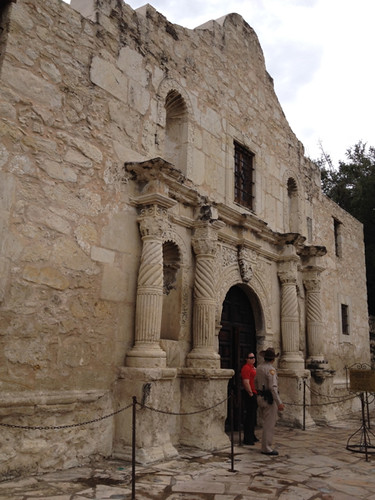

Just as the Australian defeat at Gallipoli is popularly portrayed as a ‘coming of age as a nation story’, so too is the 1836 defeat of Texan troops and volunteers at the Alamo by a far superior Mexican army led by infamous General Santa Anna seen as ‘a place where men made the ultimate sacrifice for freedom’ (to quote the official guide pamphlet). The site is maintained by the Daughters of the Republic of Texas who, under Texas law, must preserve the site ‘as a sacred memorial to the heroes who immolated themselves upon the hallowed ground’. With a cast of characters such as famed frontiersman David Crockett and renowned knife fighter Jim Bowie at the siege of the Alamo, the Franciscans and native Americans who inhabited the site more than a hundred years earlier become merely a footnote in history.
The other four San Antonio missions had a less notable later history. The next mission after San Antonio de Valera and the best known, was San Jose, established in 1720, where the large chapel and cloisters, and remainders of ‘native ‘ houses within a well-fortified compound are evidence of a successful community.

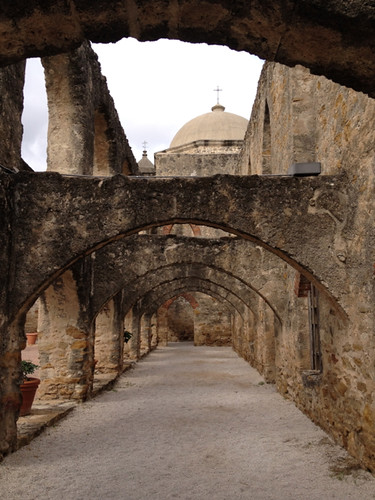
The missions of Concepcion,
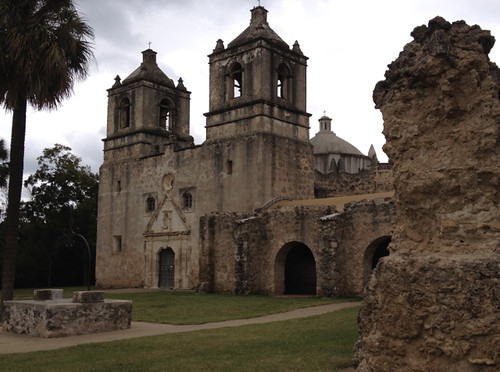

San Juan
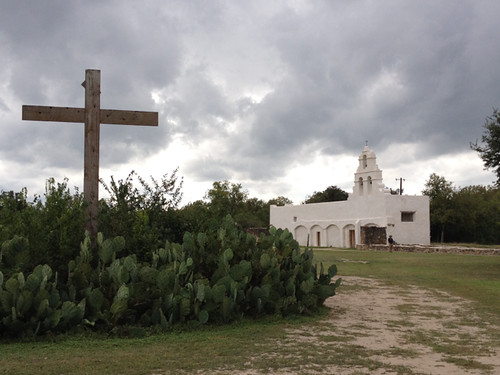

and Espada (my favourite)
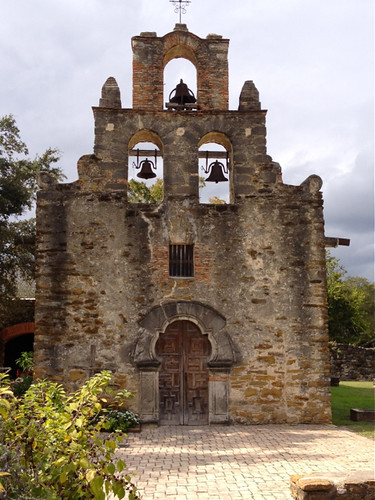
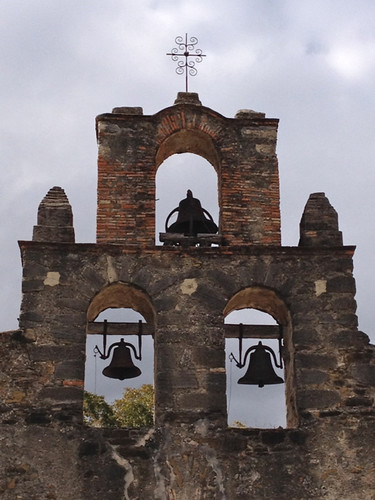
were transferred in 1731 from East Texas, end each set up communities specializing in various forms of farming and brick-making.
Over time the effects of European diseases, intermarriage and acculturation rendered the missions too difficult and unproductive for the Catholic church to maintain across the distance from Mexico City and by 1824 their lands were redistributed among the inhabitants and the churches given over to the secular clergy.
It seems to me that one of the USA’s strengths is the diversity of its history. Long before the western frontier was ‘settled’ as part of the modern USA, the influence of Mexico was strong and widespread. It’s been interesting to have a small glimpse of this influence.
A couple of days later I visited a museum of history of a much later period - The Sixth Floor Museum at Dealey Plaza in Dallas. The Museum is located on the sixth floor of the (then) Book Depository from which the shots were fired that killed President John F Kennedy in November 1963. At least, that's the official version of what happened, and the version to which most people now subscribe.
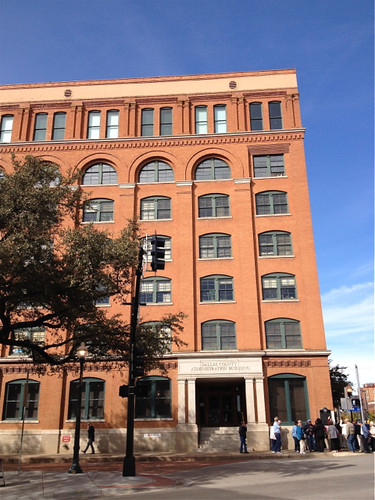
The shots were fired from the window on the right-hand end of the sixth floor. Within the museum the boxes of books behind which Lee Harvey Oswald is believed to have hidden and upon which he rested the gun have been recreated as they were discovered after the killing. The museum is wonderful. Everybody is issued with earphones and you progress around screens of photographs and images, while listening to voices and commentary of the time. Somehow it manages to be both very informative and very moving at the same time. I confess that there were several times that I, like others of the many visitors to the Museum, was very teary. You can see the view of Elm Street, that the shooter had from the corner window:

The final shot that killed President Kennedy struck just beyond where the three people are standing at the right of the photograph above. After I left the Museum I walked down Elm Street to view the 'grassy knoll' so beloved of conspiracy theorists who believe there was more than one assassin involved in Kennedy's killing.
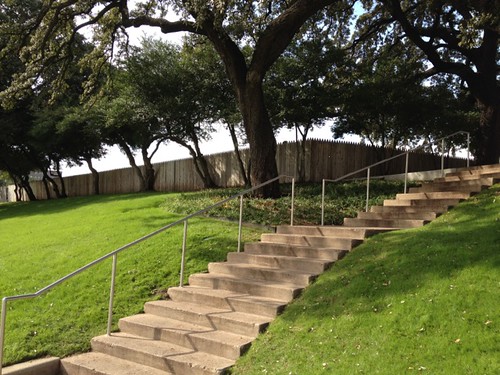
I'm old enough to remember President Kennedy's assassination and its shock to the world. This Museum is a very well-researched and balanced recounting of the event. It takes great trouble to remind or inform visitors of the events and attitudes of the early sixties and the complexity of the politics of Kennedy's era. I found it absorbing.
As a footnote, President Obama visited Dallas the same day I arrived. It was a much less public event than Kennedy's 1963 visit, but I imagine the fear of presidential assassination must now be even greater than ever.
2 comments:
I am loving the travelogue, but was also wondering if all was well with the family in the Philippines?
Thanks again, Lyn for another of your wonderful travelogues. San Antonio is a place I have always wanted to visit. You have inspired me once again. The Dallas museum has been featured on television recently as the anniversary of Kennedy's death approaches. I think I would find it 'spooky'. It is one thing to visit locations where battles and death occurred long before my time, but to visit one where the events happened in my life time - I am not sure I would enjoy it.
Post a Comment